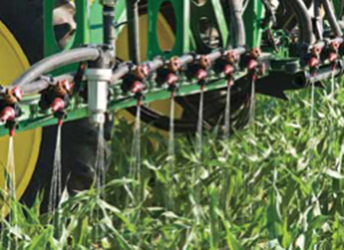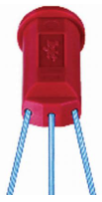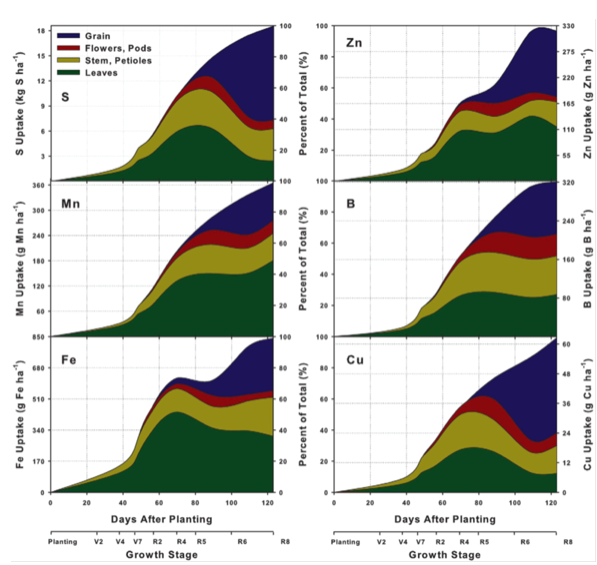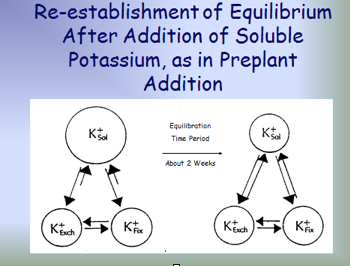Here at AgriEnergy Resources in Princeton, Illinois, we have long promoted banding fertilizer and using biological products to boost fertilizer use efficiency in both corn and soybeans. That combination has a long, proven track record for corn. We’re learning soybeans will respond as well. Many growers have found they can get excellent corn yields, even on low fertility soils, by banding phosphorus and potassium with the corn planter and sidedress application.

Several of our Indiana growers have been using these same concepts to enhance their soybean fertility program and are increasing yields as a result. Many are growing 70 plus bushel beans on light soils testing low in phosphorus and potassium. They are using a stream application during the growing season. For most growers, it involves using StreamJet® nozzles on their conventional sprayers to apply in dribble bands 7 inches apart. The target application time frame is from V5-R1, trying to get fertilizer applied just ahead of flowering and canopy or row closure.
Here’s a closeup of the most commonly used TeeJet® StreamJet SJ3 fertilizer nozzle. Although, some growers will place fertilizer beside the row with a 360 Y-Drop® instead of using the stream nozzles.

Why are growers seeing success with this banding practice? We think the following reasons partially explain its success:
- Growers haven’t paid much attention to soybean fertility in the past, even though they have low fertility levels. This program addresses fertility in the soybean crop.
- Banding increases fertilizer use efficiency. Why not extend this to the soybean crop?
- Unlike corn, soybeans can withstand stress and lower nutrient levels early in the season and still yield. However late application may be a real key here to moving yields to the next level.
Look at the nutrient uptake curve on the charts below. The charts are from a paper published by Ross Bender, Jason Haegele and Fred Below as part of Six Secrets of Soybean Success. They illustrate that rapid nutrient uptake happens from the late vegetative stages through seed development.


The delayed timing of application allows less time for the nutrients to be tied up in the soil before being taken up by the plant. The band application further reduces the chance for tie up. The following illustration shows the fate of applied potassium and its tendency to be tied up by the soil over time.
Potassium availability is greatly influenced by soil tilth. If soils are lacking oxygen, potassium won’t be available. We’ve observed that fields with biological SP-1™ banded in the row had improvements in soil tilth compared to untreated areas. We observe the same thing with the stream applications. Biologicals, like the organisms in SP-1™, help with nutrient cycling and plant availability in the soil.

Looking at the sharp uptake curve of potassium and sulfur, we think the potassium thiosulfate is a vital component of this system. AgriFood Labs has stated, “There is a positive relationship of K in the soybean leaf and yield. We can explain 32% of the soybean yield by the K content in the most recently matured trifoliate leaf just before growth stage R 5.0.”
Putting it all together, we’re taking advantage of proper timing and placement of liquid fertilizer, combined with biology, to gain greater fertilizer use efficiency providing key nutrients to the plant at a critical time.
One of the potential pitfalls of surface banding fertilizer is the inability to move the nutrients into the soil where they can be utilized without adequate rainfall after application. Under dry soil conditions it would be advisable to use a soil adjuvant product to help move nutrients into the soil profile. Products like Oro® RZ are designed for the uniform distribution of soil-applied nutrients.
While we don’t have all the answers about in-season stream applications of nutrients on soybeans yet, we have seen enough good results to know that this is a practice that deserves more consideration.




 and then
and then